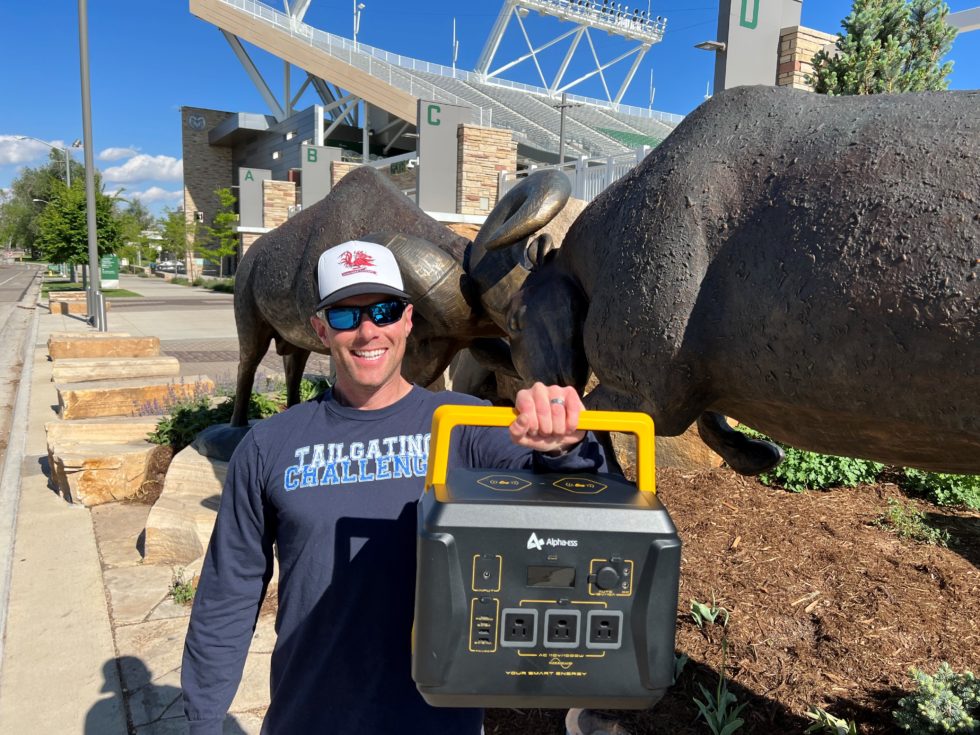Cooked A Meal With The AlphaESS BlackBee 1000 Portable Power Station
We received Jennifer Sensiba's review of the BlackBee 1000 Portable Power Station. It's unbelievable that Jennifer Sensiba made a meal out of BlackBee 1000!
We noticed that there are advantages and disadvantages mentioned in the review article evaluation.
In the article Jennifer Sensiba mentioned:
Good Things About The AlphaESS 1000W Power Station
The first thing that I noticed about the AlphaESS 1000W is the price.
It comes in at about $100 cheaper than comparable power stations .
The second cool thing about this station is its form factor. It’s fairly easy to carry. It’s got a folding handle that you can put out of your way when using it. It also has some good shock protection on the corners.

The folding handle also serves another vital purpose: getting out of the way so you can use the station’s two wireless charging pads. Yes, I said two (2). I found this to be a very handy feature.

Another really cool feature is that they didn’t waste the space on the back of the unit. Being LED, it doesn’t use much power, despite being quite bright on the top setting.

There’s plenty to like about the availability of plugs. It has the usual power input that can be fed with solar power (sold separately), a 12-volt cigarette lighter-style outlet, two more 12v ports, two USB-B power outlets, one USB-C PD outlet, and three 120 volt outlets (max 1000 watts total).
Like some of the smaller units I’ve tested, this one allows you to charge it with USB-C PD chargers, like you’d get with a laptop computer or tablet. You can put up to 100 watts of power into it this way (or, take up to 100 watts out to run devices).

Let’s talk about running this device to its limits. After some trial and error with big devices in my home (it did run the fridge, but that’s only about 250 watts), I found something that tested it to the limits: my cheap electric griddle from Walmart. It pulled 1050 watts. Once I saw that it could handle the load, I started dropping food onto it. The kids got a nice bedtime snack (eggs in a basket) cooked from portable battery power. In total, this drained the battery down to 62%, so it’s possible to cook two meals on one charge and still have room to charge phones and run some emergency lighting if you’ve got sun to charge it up (panel sold separately).
The AlphaESS 1000W unit did put out just above the 1000 watts of advertised power, but it required the unit to turn its cooling fans to full blast and even then, it got a little hot. Not hot enough that it concerns me, though. It did a good job of shedding its heat once the meal was finished and the fans kept going.
One final test was my typical ham radio test. This doesn’t pull much power from the AlphaESS 1000W unit (I only transmit 5 watts maximum, hams call this “QRP” power), but it does test to make sure the device can output clean power to multiple outputs simultaneously and that it doesn’t make a bunch of radio noise. The unit passed this test well, and I traded signals with people as far away as the Caribbean.

Gotchas & Downsides
There were only two small downsides to the unit.
First, you have to press the “info” button next to the display twice like double-clicking a mouse to get the plates to turn on.
The only other small thing that was annoying was the lack of a time left readout on the display.
Despite these two little problems, I’d still recommend the unit for its strengths and its low price. Next, I’ll be passing the unit off to a family member so they can give it a long-term test. Expect some results in 6-12 months, or sooner if they have a power outage that they use it for.
All images by Jennifer Sensiba.




